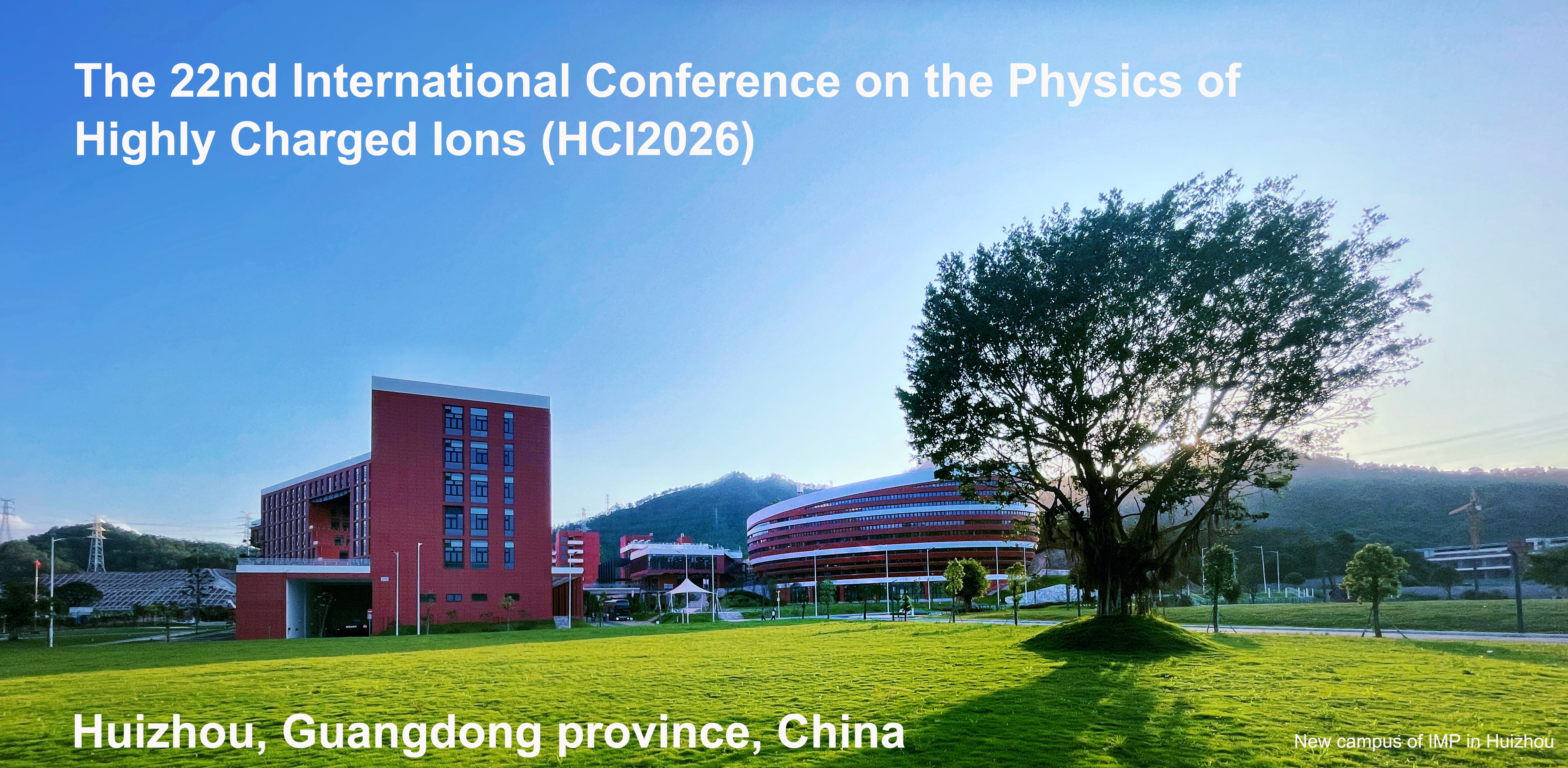
The 22nd International Conference on the Physics of Highly Charged Ions (HCI2026) will be held from September 7 to 11, 2026, in Huizhou, China. As a prominent event in the international HCI conference series, HCI2026 will offer a global forum for researchers to share and discuss the latest breakthroughs in the field of highly charged ions (HCIs). Since its inception in 1982, the biennial HCI conference series has continuously evolved, attracting scientists from diverse disciplines around the world.
In recent years, the field of highly charged ions has seen remarkable progress, driven by substantial experimental innovations and significant theoretical developments. HCI2026 aims to bring together experimentalists and theorists to explore a broad spectrum of topics, including:
l Fundamental Aspects, Structure, and Spectroscopy
l Collisions with Electrons, Ions, Atoms, and Molecules
l Interaction with Clusters, Surfaces, and Solids
l Interactions with Photons and Plasmas
l Strong Field and Ultrafast Processes
l Production, Experimental Developments, and Applications
The conference will feature a single-session format, ensuring that every participant has the opportunity to engage in all discussions. Additionally, ample space will be provided for poster presentations, allowing researchers to present their findings.
Highly charged ions represent a cornerstone of modern atomic and plasma physics research, with broad implications across multiple scientific disciplines. Their unique properties make them an ideal testbed for advanced quantum electrodynamics (QED) calculations. They also hold promise for applications such as next generation atomic clocks, searches for variations in fundamental constants, and exploration of physics beyond the Standard Model. Moreover, HCIs are ubiquitous in high-temperature plasmas, ranging from stellar objects and black hole accretion disks to laboratory fusion devices and semiconductor processing plasmas. The diagnosis of such extreme environments demands a deep understanding of the structural, collisional, and radiative properties of HCIs—knowledge that is often still insufficient.
A central theme of HCI physics is the generation of fundamental atomic data -- spanning both structural and collisional properties -- underscoring the interplay between theory and experiment. The theoretical domain includes many-body effects in QED calculations and the accurate modeling of energy transfer in strongly radiating plasmas dominated by HCIs. Experimental advancements rely on advanced facilities and innovative instrumentation for HCI production—Such as accelerators, electron-cyclotron resonance sources, electron-beam-ion-sources/traps, and free-electron lasers—as well as the development of methods to probe HCI behavior in complex environments like clusters and surfaces.
We eagerly anticipate welcoming colleagues from around the world to HCI 2026. Together, we will engage in stimulating discussions, share new insights, and advance the understanding of highly charged ions in this rapidly evolving field.

